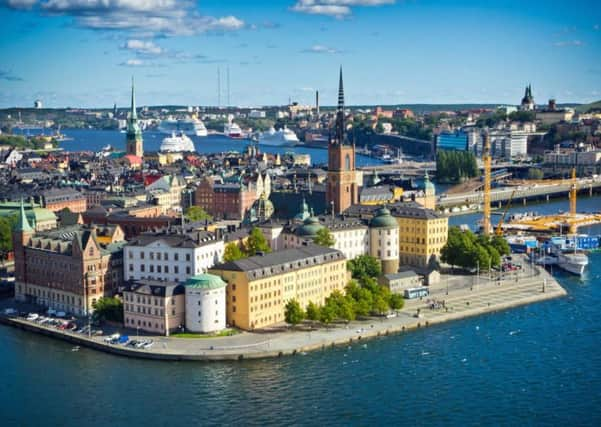Dominic Hinde: Would the SNP's Nordic model work?


In the northern suburbs of Shanghai, at the end of one of the city’s metro lines, sits a peculiar planned town.
This end point for hardy metro travellers and the dreams of utopian architects is designed to be an exact copy of a Swedish lakeside town, complete with Scandinavian public art and winding narrow lanes.
Advertisement
Hide AdAdvertisement
Hide AdWhen Meilan Lake was built as part of a government mandated five year plan, it was one of several experimental communities of Western style housing for middle class Chinese longing for something other than concrete apartment blocks.
A decade on, Meilan Lake looks less and less like the country it was supposed to perfectly imitate: When the Chinese government built its model Swedish town it did not consider that whilst the facades were Swedish, the politics were steadfastly Chinese.
In both the independence referendum and more recently, the SNP have made fond nods to the Nordic countries, whilst the Yes movement as a whole was even more enthusiastic about the possibilities of Nordic Scotland.
Bernie Sanders regularly name-checks Norway, Sweden and Denmark in his campaign speeches, and people like what they hear on both sides of the Atlantic.
The problem with Scandinavia is that whilst we all think we might like a piece of the Nordic model, it means far more than paying lip service at TV debates and talking about values. Like any political project, it is all about the economics.
Olof Palme, the disarmingly intelligent former Swedish Prime Minister, became a celebrity politician synonymous with progressive politics in the Sixties and Seventies, admired by those in search of a middle way between American Capitalism and Soviet Communism who saw Sweden as a realisation of that dream.
He once summarised his beliefs in an interview with David Frost by saying ‘we are doomed to live on this earth and we should make life as agreeable as possible for as many people as we can.’
It might sound a touch nihilistic, but the biggest achievements of the Nordic welfare state were not log cabins and crime drama but the rolling out of support for normal working people.
Advertisement
Hide AdAdvertisement
Hide AdHigh basic wages, free education and good housing were the foundation of the Nordic model from the 30s onwards, and in time environmental responsibility and greater gender equality were added to the mix. To the wealthy these things are prosaic details, to those less well-off they create a life worth living.
Look through the SNP manifesto though and it is very difficult to find anything that would make Scotland more Nordic in the immediate future.
Scottish housing policy is still wedded to the estate homes of the 80s and 90s, based on private ownership and increasing value. A top tax rate of 45 per cent and retention of a council tax are the opposite of the progressive taxation on which the Nordic model was historically built.
The ends results are impressive, but without any great understanding of how the Nordic countries got to where they are today the rhetoric of Nordic progressiveness is an easy one to co-opt.
Even David Cameron went through a phase of enthusiasm for all things Nordic, teaming up with Swedish ideological stablemate Fredrik Reinfeldt to launch a now largely forgotten and limp alliance of the UK and Nordic states.
But is the SNP’s plan for the next five years any different? Whereas the Nordic model taxes to invest, the SNP seem to prefer stimulus through lowering taxes and are reluctant to heavily tax middle class earners.
Even during its eight years of conservative rule between 2006 and 2014, Sweden still had higher public spending than Scotland relative to GDP. Spending in Scotland relative to the UK is often punted around by critics of the Barnett formula, but it says more of a lack of investment on the English side than largesse north of the Border.
By Swedish standards almost every public service in Scotland is underfunded.
Advertisement
Hide AdAdvertisement
Hide AdViewed from Scandinavia, Scottish politics still looks very British indeed. The upheaval of independence would be nothing compared to making Scotland work like a Nordic state, and the SNP are likely well aware of that fact.
As residents of Shanghai’s Swedish town found out, it pretty quickly becomes apparent that you cannot be Nordic without changing a thing. Chinas’s peculiar form of aggressive undemocratic capitalism is referred to as Socialism with Chinese Characteristics.
Eighteen months after a referendum where so many flirted with the idea of a model Nordic state, the SNP seem content to have Nordic Social Democracy with distinctly Scottish characteristics.
Dominic Hinde is an author, academic and foreign correspondent across Northern Europe. His book ‘A Utopia like Any Other: Inside the Swedish Model’ is released next week on Edinburgh’s Luath press.
